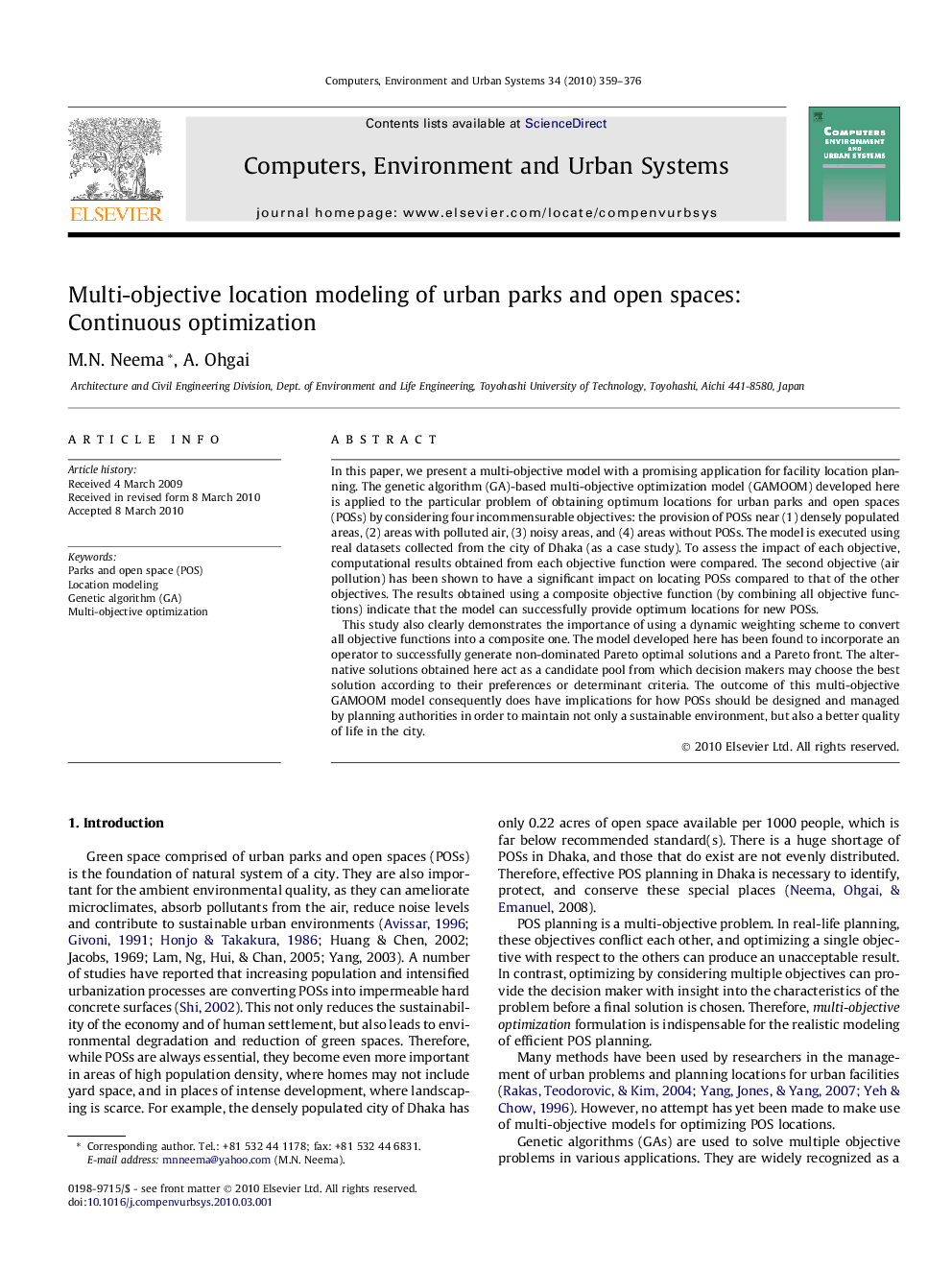| Article ID | Journal | Published Year | Pages | File Type |
|---|---|---|---|---|
| 506715 | Computers, Environment and Urban Systems | 2010 | 18 Pages |
In this paper, we present a multi-objective model with a promising application for facility location planning. The genetic algorithm (GA)-based multi-objective optimization model (GAMOOM) developed here is applied to the particular problem of obtaining optimum locations for urban parks and open spaces (POSs) by considering four incommensurable objectives: the provision of POSs near (1) densely populated areas, (2) areas with polluted air, (3) noisy areas, and (4) areas without POSs. The model is executed using real datasets collected from the city of Dhaka (as a case study). To assess the impact of each objective, computational results obtained from each objective function were compared. The second objective (air pollution) has been shown to have a significant impact on locating POSs compared to that of the other objectives. The results obtained using a composite objective function (by combining all objective functions) indicate that the model can successfully provide optimum locations for new POSs.This study also clearly demonstrates the importance of using a dynamic weighting scheme to convert all objective functions into a composite one. The model developed here has been found to incorporate an operator to successfully generate non-dominated Pareto optimal solutions and a Pareto front. The alternative solutions obtained here act as a candidate pool from which decision makers may choose the best solution according to their preferences or determinant criteria. The outcome of this multi-objective GAMOOM model consequently does have implications for how POSs should be designed and managed by planning authorities in order to maintain not only a sustainable environment, but also a better quality of life in the city.
